Basic QC Practices
The 2021 Latin and South American QC Survey
The Global QC Survey of 2021 further explored the practices in Latin and South America, where change is rapid.
The 2021 Latin and South American QC Survey Results
Sten Westgard, MS
November 2021
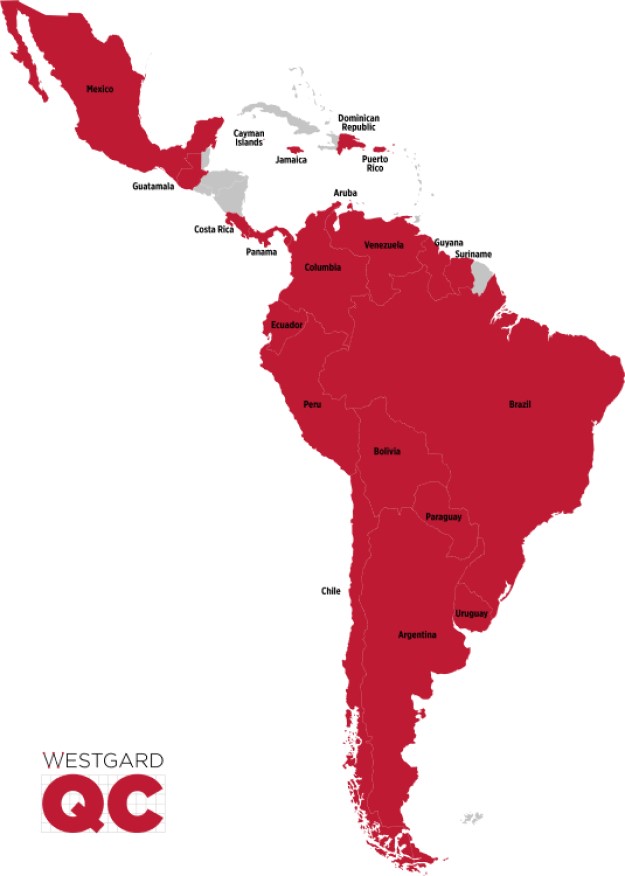
[This survey was completed with the support and partnership of Technopath Clinical Diagnostics.]
- The Top Ten Findings of the 2021 Global QC Survey
- The 2021 Global QC Survey
- The 2021 US QC Survey Results
- The 2021 Asia QC Survey Results
- The 2021 Middle-East QC Survey Results
- The 2021 Latin and South America QC Survey Results
- The 2021 European QC Survey Results
The demographics
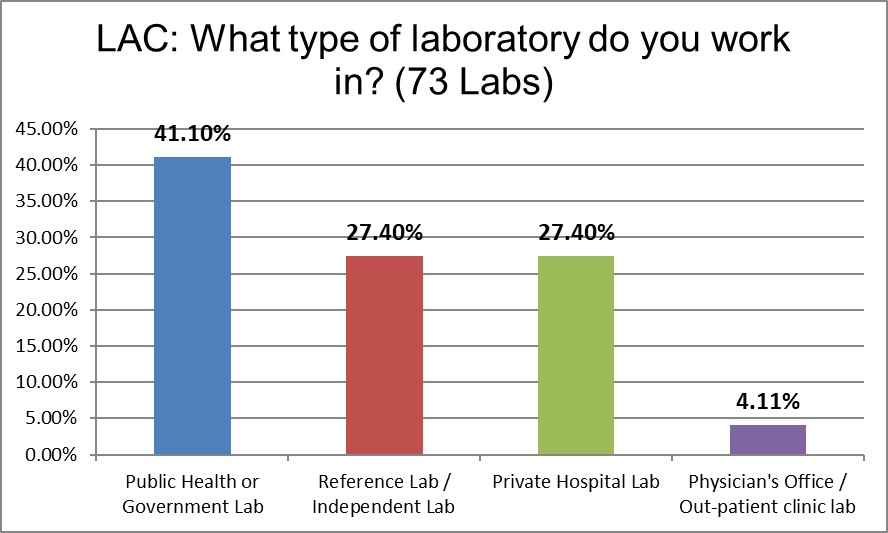
Public hospitals dominated our Latin and South American respondents.
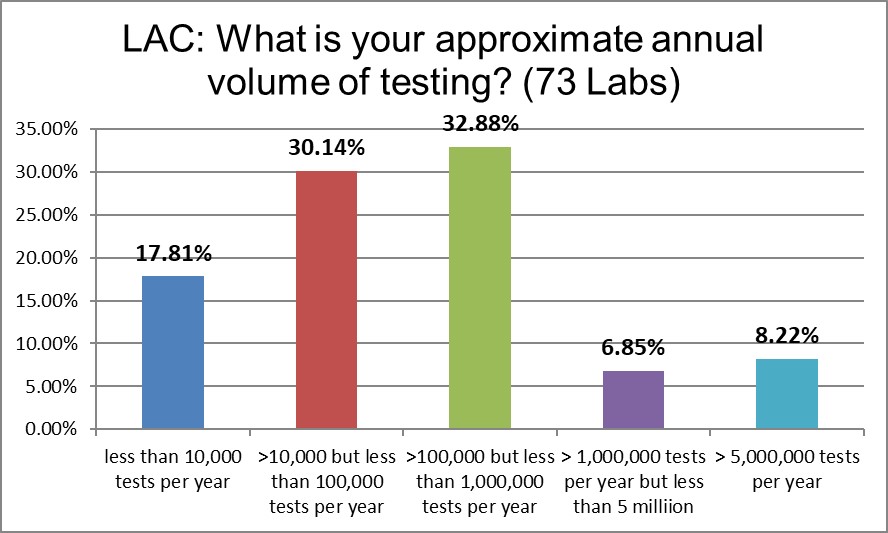
More small labs from this region participated in this study. Not as many very large and mega-labs. While the region has some of the largest labs in the world, unfortunately we did not capture their practices.
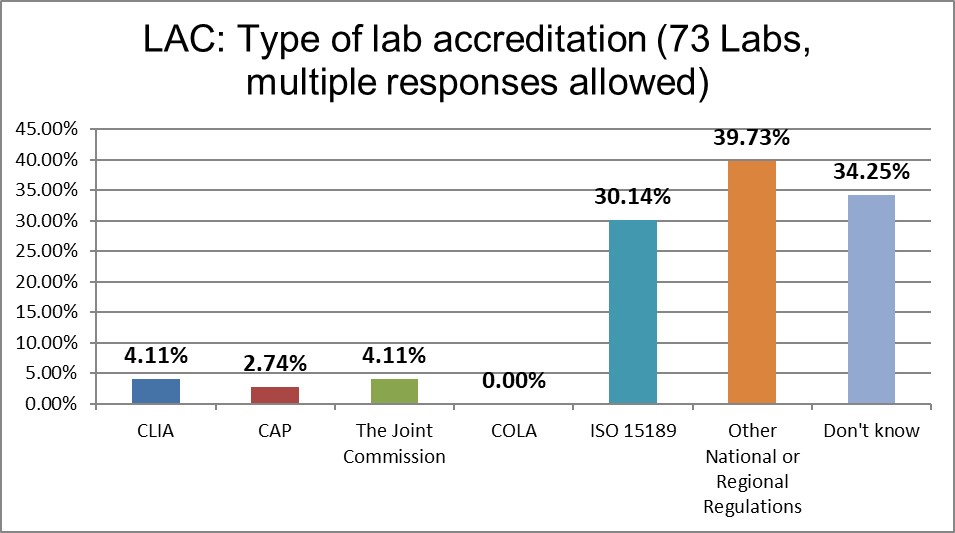
ISO 15189 and other local regulations are the strongest determining factor, while CLIA and CAP having very, very impact.
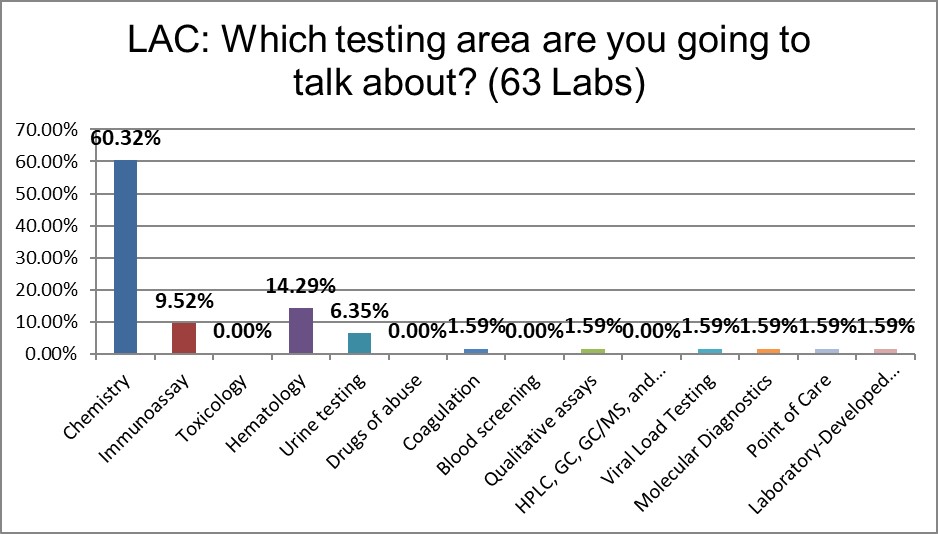
The respondents focused most on the QC performed in their biochemistry testing.
Now, how do these labs practice QC?
The QC Set Up
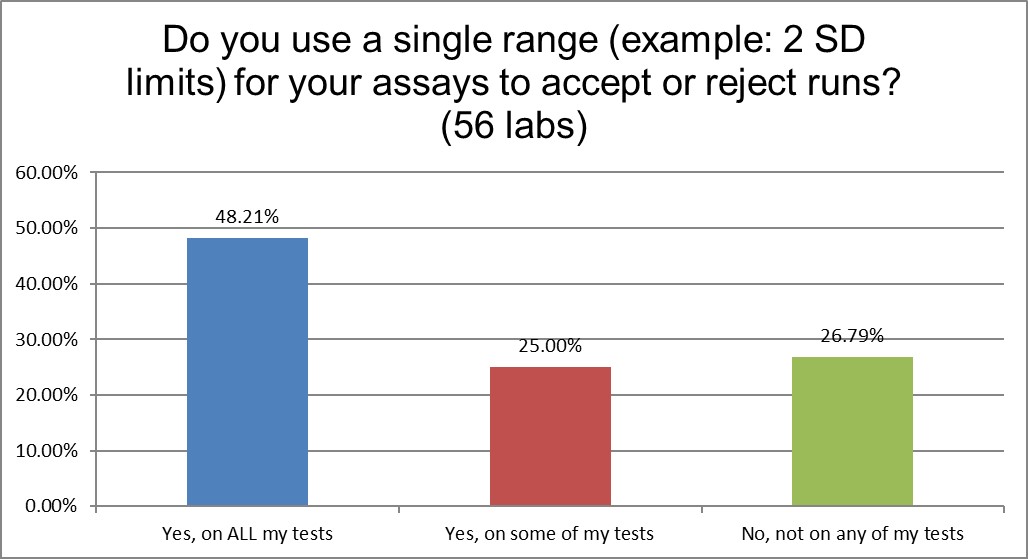
Fewer laboratories use 2 SD limits in Latin and South America than the global average and also the US.
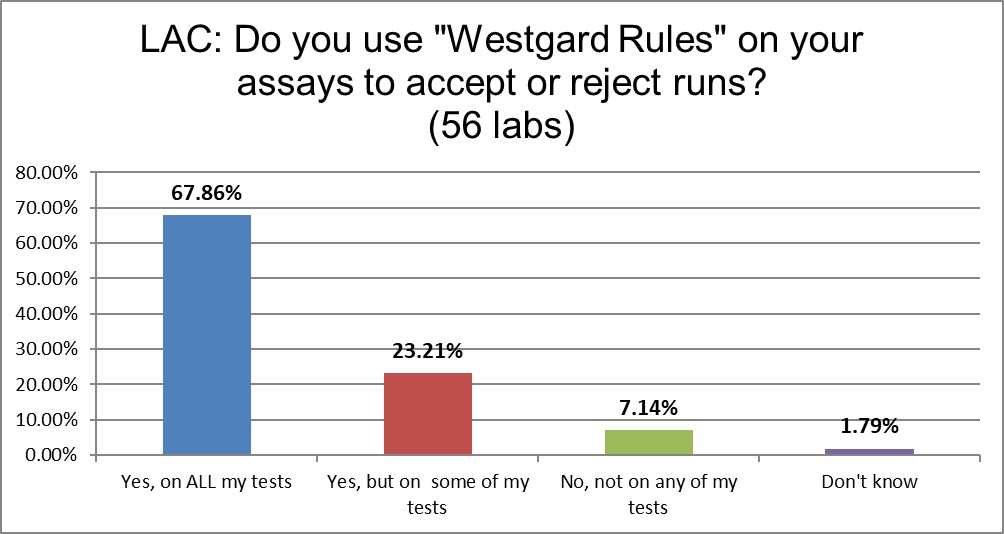
More than 90% of the laboratories from this region use "Westgard Rules" on some or all of their tests. This is a higher rate than the US, but similar to the global average.
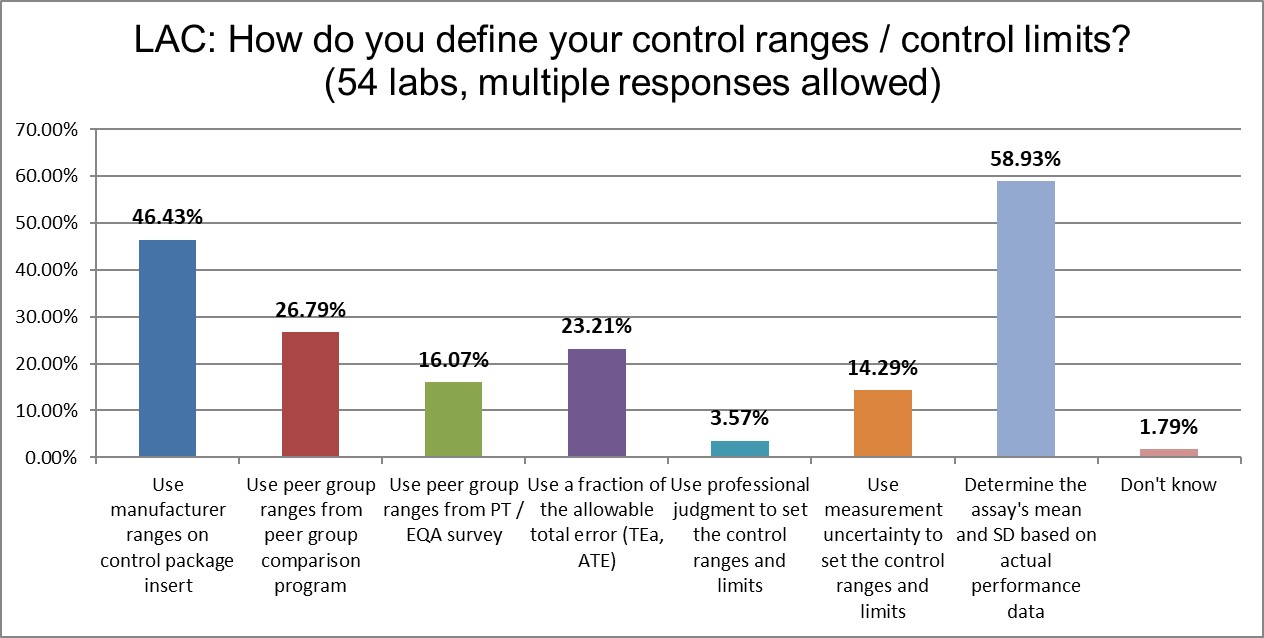
Over half of laboratories are establishing their own mean and SD. Around 46% are using manufacturer ranges, lower than what is seen in the US, the Developed world. Almost a quarter of laboratories are using a fraction of the allowable total error as a way to set limits (which is not the best way to set a range). Similar to the European region, almost one in eight labs are using measurement uncertainty to set their ranges. It's an interesting mix of different practices.
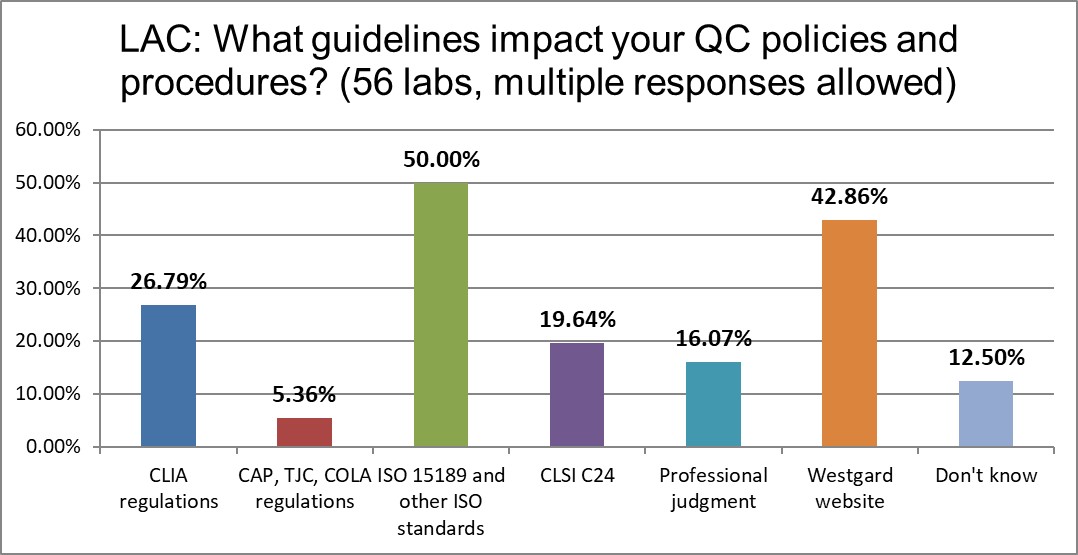
Latin and South America is caught somewhere between the US and Europe, and both CLIA and ISO have strong influences in laboratories. The Westgard website has more influence than CLIA and CAP. Intriguing to see that CLSI C24 has twice as much influence here than in the US.
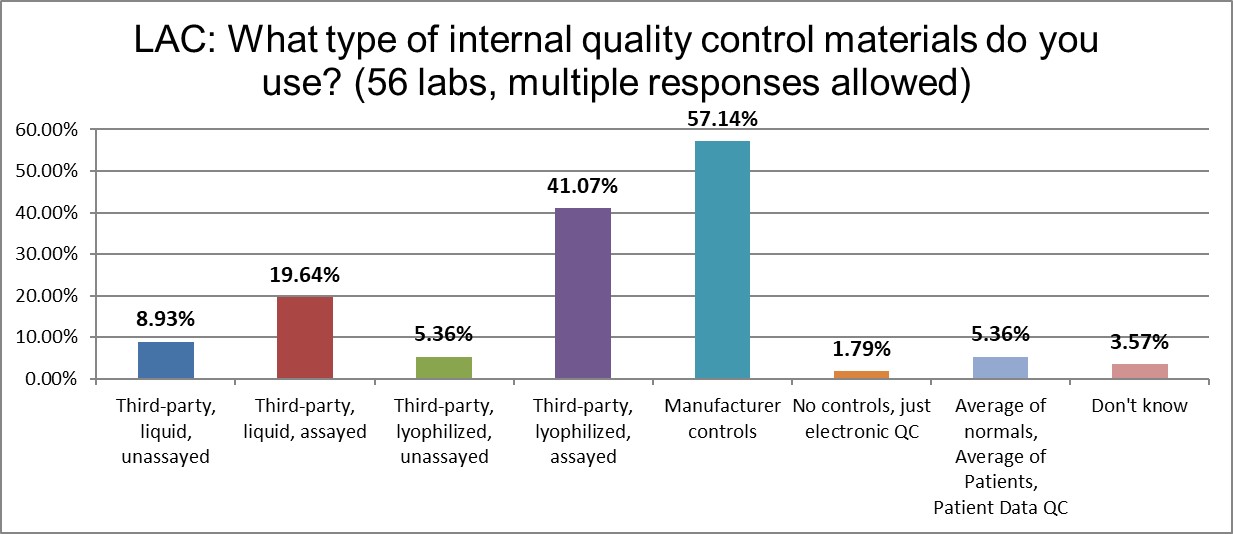
The use of Third-party lyophilized controls are very high here, while liquid controls of all types are used at less than the global average. Surprisingly, the use of manufacturer controls is lower than the global average and lower than the US rates.
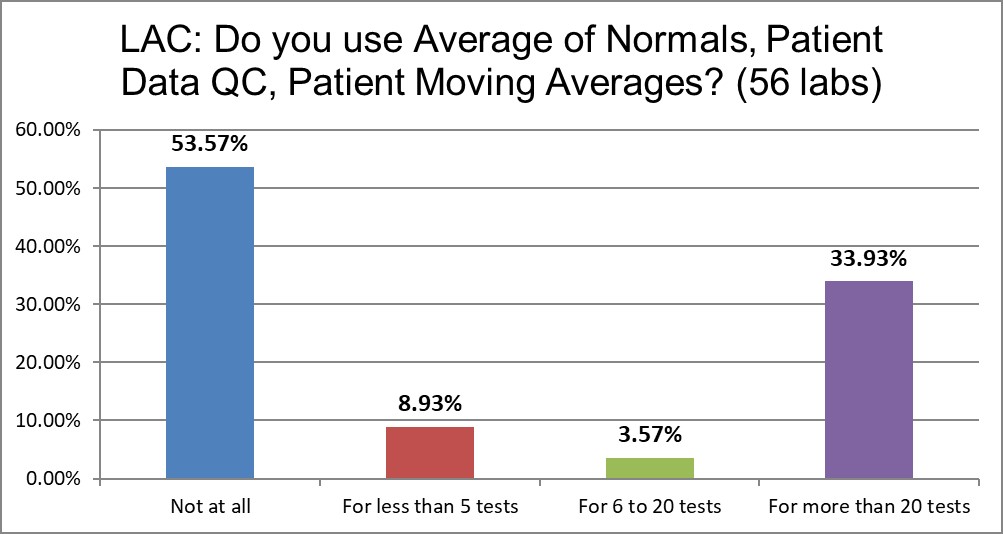
Given the challenge of obtaining controls in Latin and South America, it's perhaps not so surprising that the "free" techniques of QC - PBRTQC - are used in more than 45% of laboratories. Indeed, the use of these techniques on more than 20 tests is at a global high in this region. They use these almost four times as often as the US. Still, of course, a majority of labs do not use this technique.
The Real Practice of Running Controls
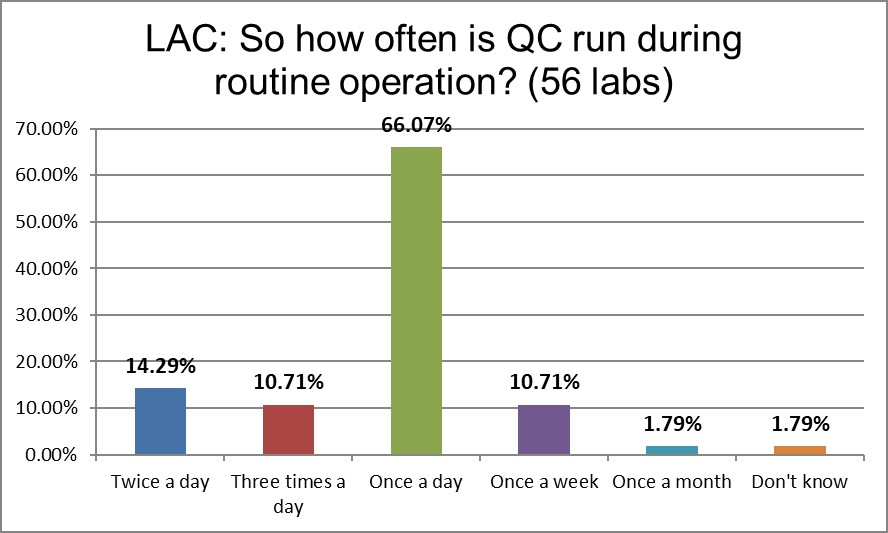
Once-a-day QC is the overwhelming practice of labs in Latin and South America. The running of controls at higher frequencies is much lower than the global average, or the US rate.
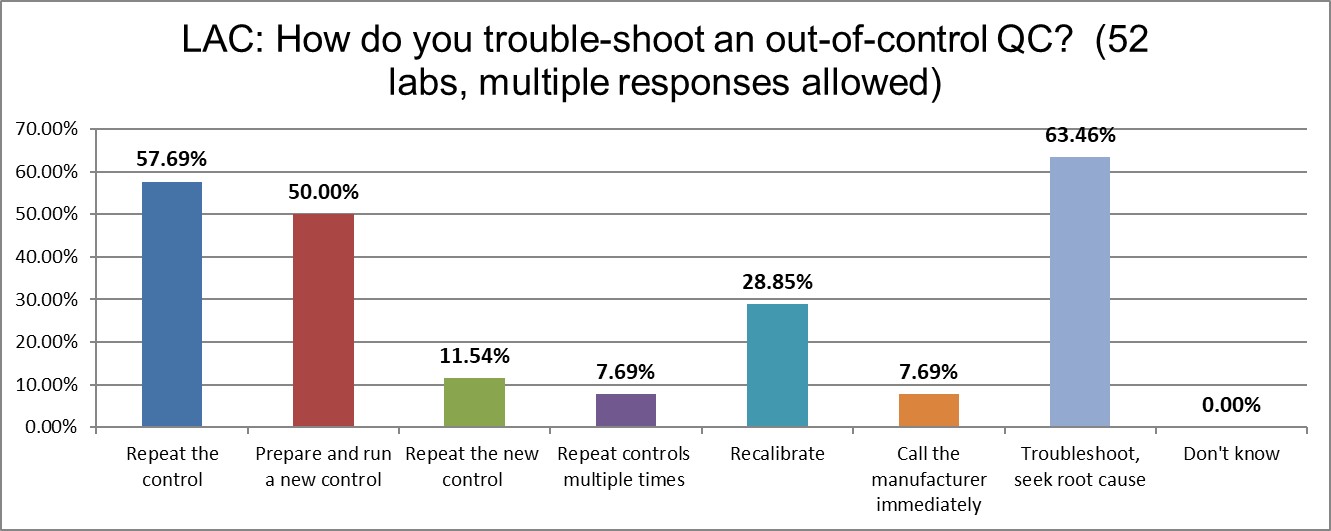
Laboratories in this region Troubleshoot and seek root cause, repeat the control, and run new controls at lower rates than the US and the global average. They do, however, recalibrate at significantly higher rates.
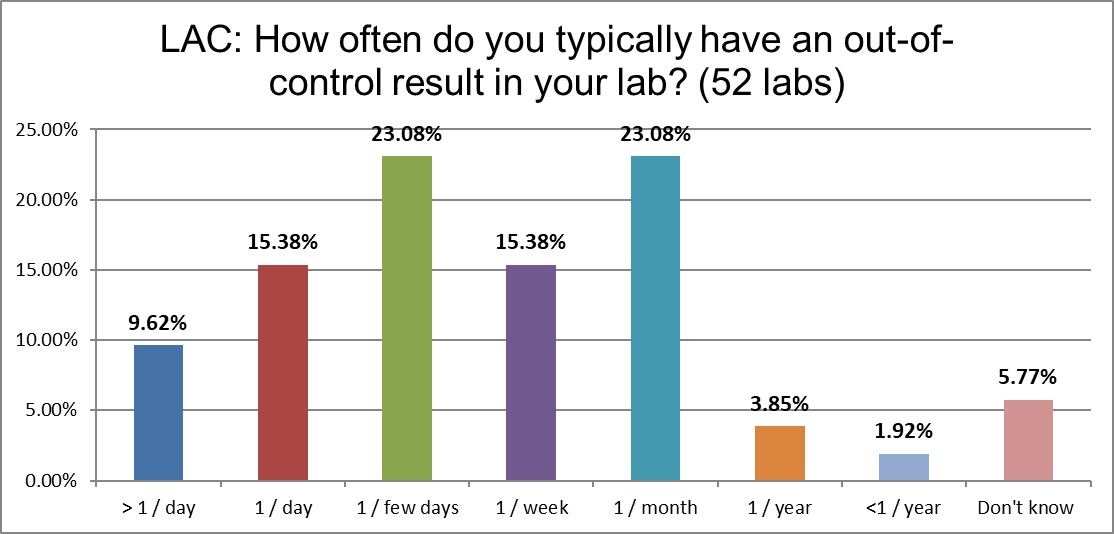
Labs in Latin and South America - almost 1 in 4 - have errors every day or more often. This is lower than the rate seen in Europe and the US. Nearly twice as many labs in this region report having errors only once a month than their counterparts in the US. Are errors really less frequent here? Or are the QC practices missing something?
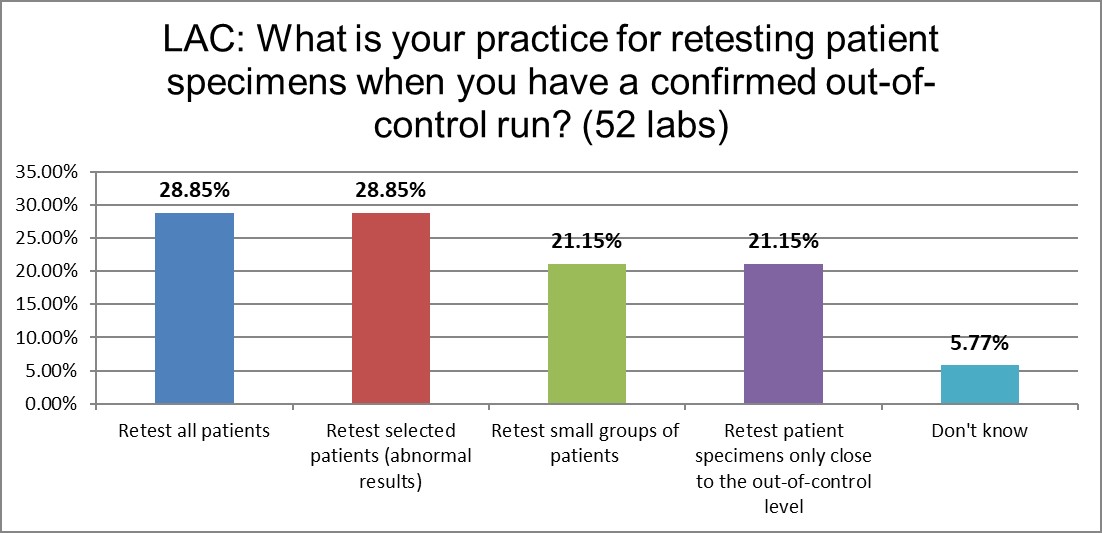
Patient retesting practices are almost equally favored across the region.
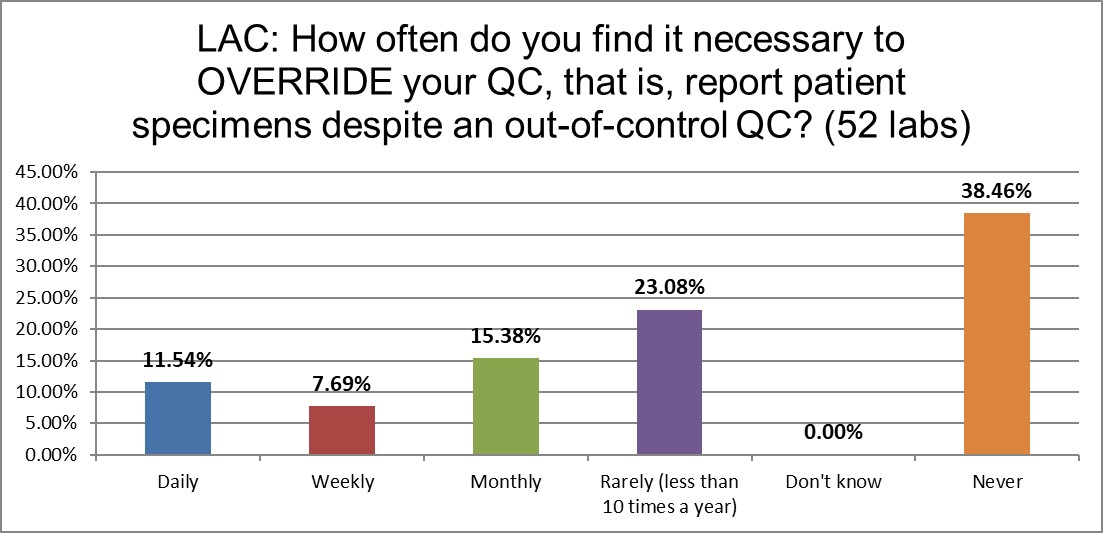
Labs in Latin and South America are six times more likely to override their QC on a regular basis than the US.
The Final Overview
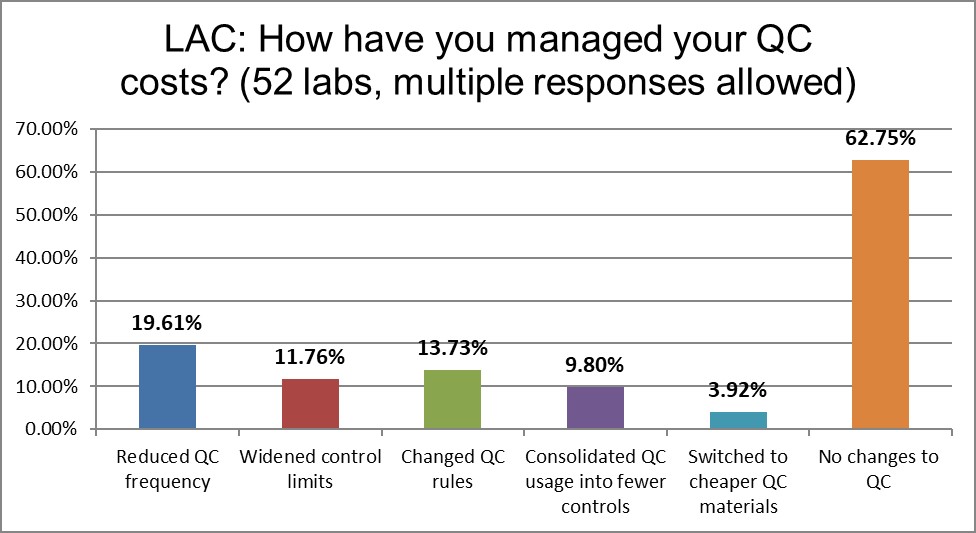
More than anywhere else in the world, labs in this region have reduced their QC frequency. They have widened ranges, changed rules twice as much as labs in the US.
Overall, there is a mixture of practices in Latin and South America. Opportunities abound for improvements and optimizations.
